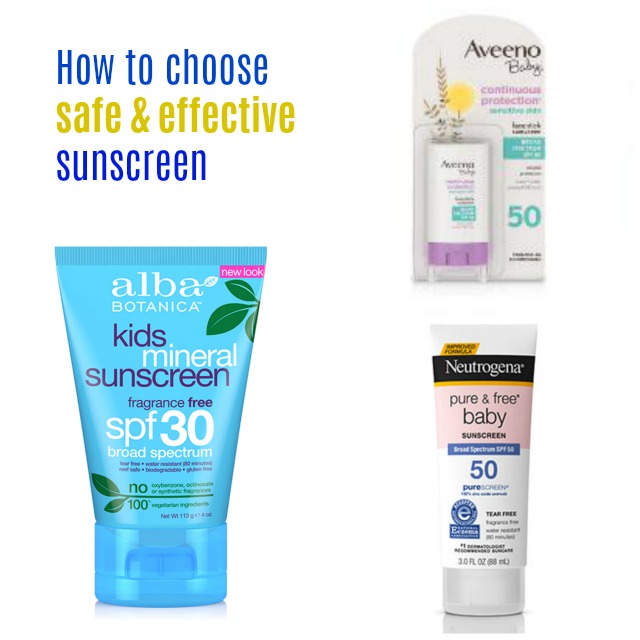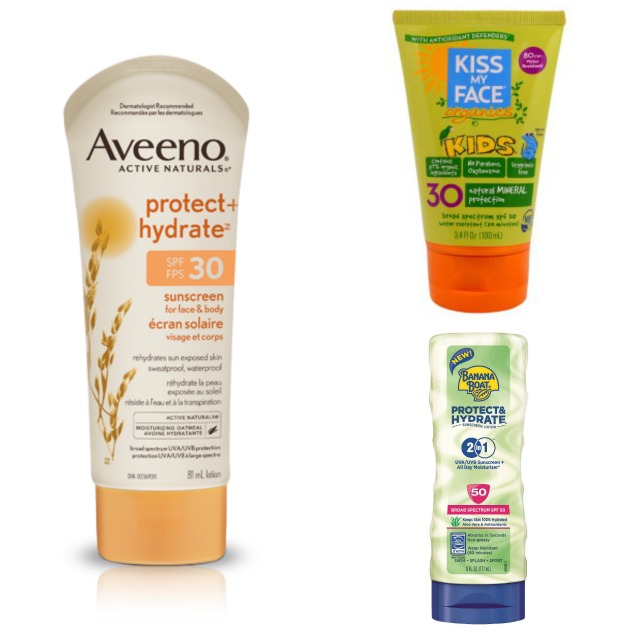How long does it take you to choose sunscreen at the drugstore?
With so many brands to choose from, and varying SPF ratings, I find choosing a trustworthy sunscreen can be an exercise in frustration. That’s why I always turn to the Environmental Working Group’s guide to sunscreens.
How to Choose Safe and Effective Sunscreen:
- Choose sunscreen with an SPF rating that’s between 30 and 50. Research has shown that higher SPF ratings are often inaccurate. As well, they lull users into staying in the sun longer, feeling protected so not reapplying often enough.
- Avoid spray-on sunscreen. I know it’s easy to apply, especially on kids, users often don’t apply a thick enough coating of sunscreen when they spray and patches of skin can be missed entirely. The other worry is inhalation. This is a big concern for kids since they can end up in a cloud of spray-screen as parents coat them from head to toe.
- Avoid sunscreen that lists retinyl palmitate (a form of vitamin A) as an ingredient. Also listed as retinol, it’s an antioxidant that, when exposed to, sunlight, accelerates harmful skin damage so may actually promote the development of skin cancer.
- Oxybenzone is another ingredient to look out for. It’s a known hormone disruptor and can also cause allergic reactions.
- As melanoma rates climb we’re reminded to not just rely on sunscreen to protect ourselves from the sun. Last year Health Canada updated their sun safety guidelines and now recommends that we all use broad-spectrum sunscreen with a minimum SPF 30. As well, the agency suggests we avoid the sun between 11:00 a.m. and 3:00 p.m., when the sun’s rays are strongest, and cover up with broad-rimed hats, tight-weave or SPF clothing and sunglasses.
- Toss out old sunscreen if it clumps or separates
Safe & effective sunscreen is easy to find.
Just because you didn’t get a sunburn doesn’t mean your skin wasn’t damaged by the sun.
There are two kinds of sun rays that can damage your skin: UVA and UVB. UVB rays cause sunburns but UVA rays are those that cause long-term damage to our skin. SPF refers only to UVB coverage offered by sunscreen. “Broad-spectrum” protects your skin from both UVB and UVA rays, but the amount of UVA protection varies a lot.









